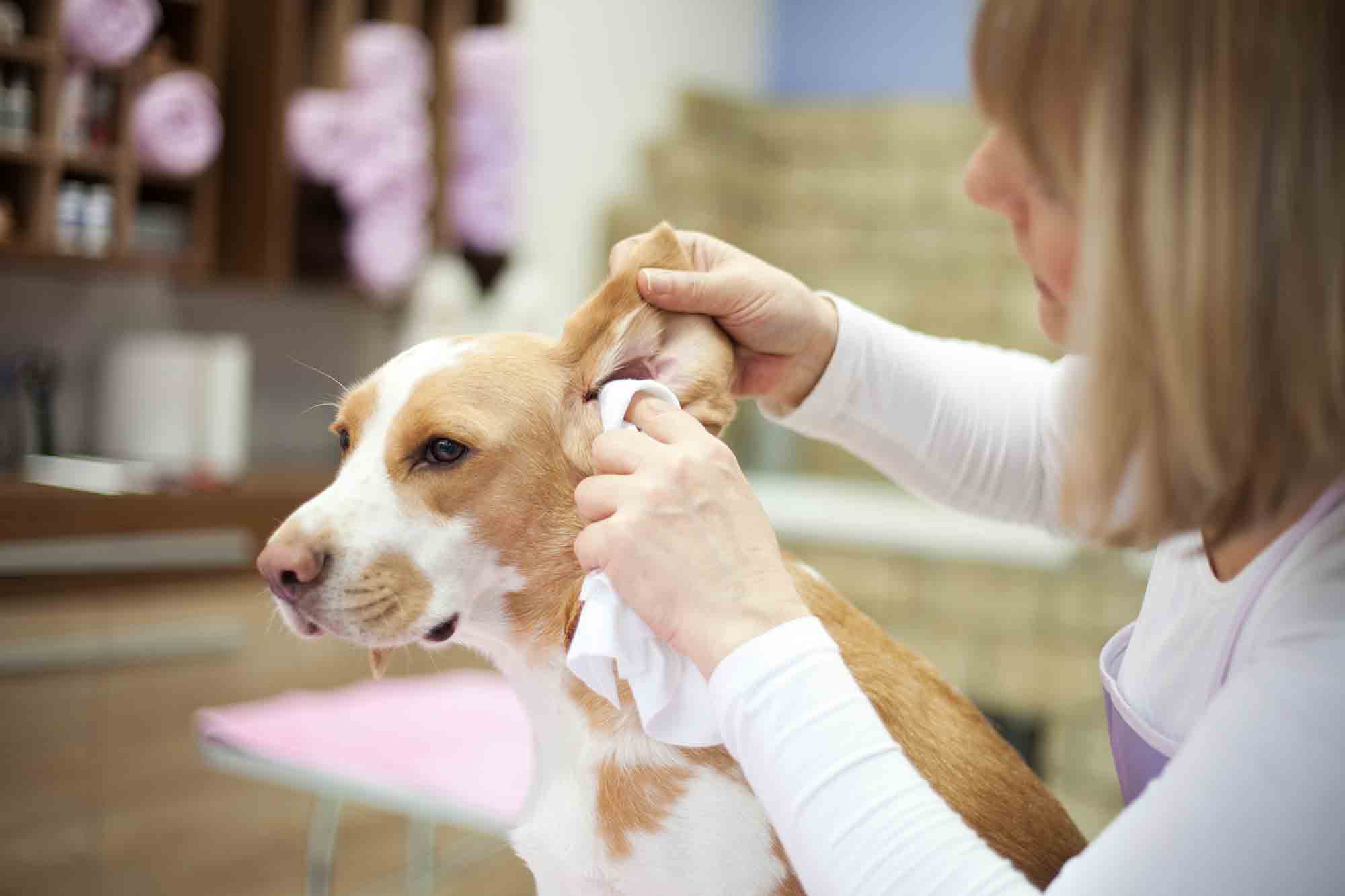Important Tips for Pet Ear Cleaning
 Taking good care of your pet involves regular grooming. A good brushing schedule, an occasional bath, and keeping the nails trimmed make it on most people’s to do lists. Cleaning the ears, however, is often forgotten. While some may find it a little daunting, pet ear cleaning is actually a straightforward procedure that anyone can perform. Beverly Hills Veterinary Associates is here to help you get started.
Taking good care of your pet involves regular grooming. A good brushing schedule, an occasional bath, and keeping the nails trimmed make it on most people’s to do lists. Cleaning the ears, however, is often forgotten. While some may find it a little daunting, pet ear cleaning is actually a straightforward procedure that anyone can perform. Beverly Hills Veterinary Associates is here to help you get started.
Pet Ear Cleaning Basics
Understanding a little bit about your pet’s ears and why you need to clean them is the first step in practicing good aural hygiene for your furry friend.
Both dogs and cats have the same basic anatomy. The ear is comprised of the ear flap (pinna), as well as an “L” shaped canal divided into the horizontal and vertical canal. When you clean a pet’s ear, you’re cleaning the pinna and external ear canal. Beyond the ear canal lies the eardrum (which is responsible for hearing) and the middle and inner ears.
Regular pet ear cleanings achieve a few important things, such as:
- They allow you to be familiar with what is normal for your pet.
- They help you to become aware of problems and changes sooner.
- They can help decrease ear problems by removing debris, moisture, and excess bacteria.
- They can prevent problems such as hearing loss.
Most pets should have their ears cleaned once or twice a week, although this can vary depending on the animal’s ear anatomy, health issues, and lifestyle.
The How To’s
So pet ear cleaning is important, but where do you start? What if you hurt your pet? What tools should you use?
Follow these tips to ensure a successful pet ear cleaning!
- Be sure you have everything you need before you start. Gather plenty of cotton balls, as well as an ear cleaner that’s pH balanced for your pet’s ears (ask us for recommendations). Remember, at home concoctions that contain things like alcohol and hydrogen peroxide can cause more harm than good. Having additional help is also a good idea until you know how your pet behaves for ear cleanings.
- Prepare your workspace. Work in a well lit area that’s easy to clean (ear cleaning can be messy!). Putting smaller pets up on an elevated work surface can be helpful. Be sure to wear clothes you don’t mind getting messy.
- Fill your pet’s ear canal with ear cleaner. Warming the cleaner in a bowl of hot water can help make this less offensive. Never microwave or overheat.
- Allow your pet to shake his or her head, loosening debris.
- Use the cotton balls to gently wipe any debris from the inside of the ear flap and the visible ear canal. You can then tuck a cotton ball into the canal to clean the inside. Don’t panic about harming your pet’s eardrum; the “L” shaped canal makes it impossible for this to happen.
- Repeat this process until the ear is clean, then do the other side.
Offer lots of praise afterwards, and reward your pet for a job well done. Before you know it, you’ll be a pet ear cleaning expert.
When to Call It
Sometimes your pet’s ears need more than just a basic cleaning. If you suspect trouble is brewing, be sure to call us right away. Pet ear problems can be painful, and we want to address them immediately. Let us know if you notice any of the following symptoms:
- Redness of the pinna (ear flap) or ear canal
- Swelling of the ear
- Your pet displays pain when the ear is handled
- Increased discharge from one or both ears
- Change in odor
- Head shaking or scratching
The most common pet ear problem is inflammation or infection of the external ear canal (otitis externa). Middle and inner ear problems can also occur.
Issues in the ears are no fun, and they’re often quite painful. The more we can head them off with things like regular ear cleanings, the better off your pet will be! Knowing how to perform a proper pet ear cleaning is a great start, but we’re also here to help should you need us.
